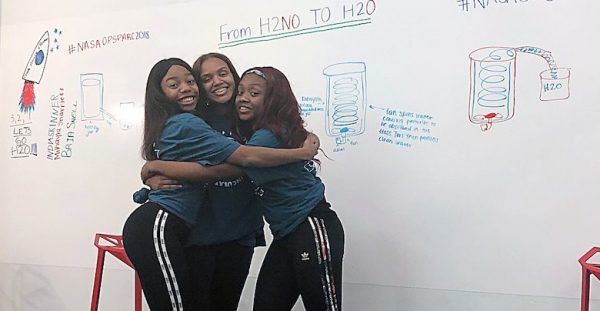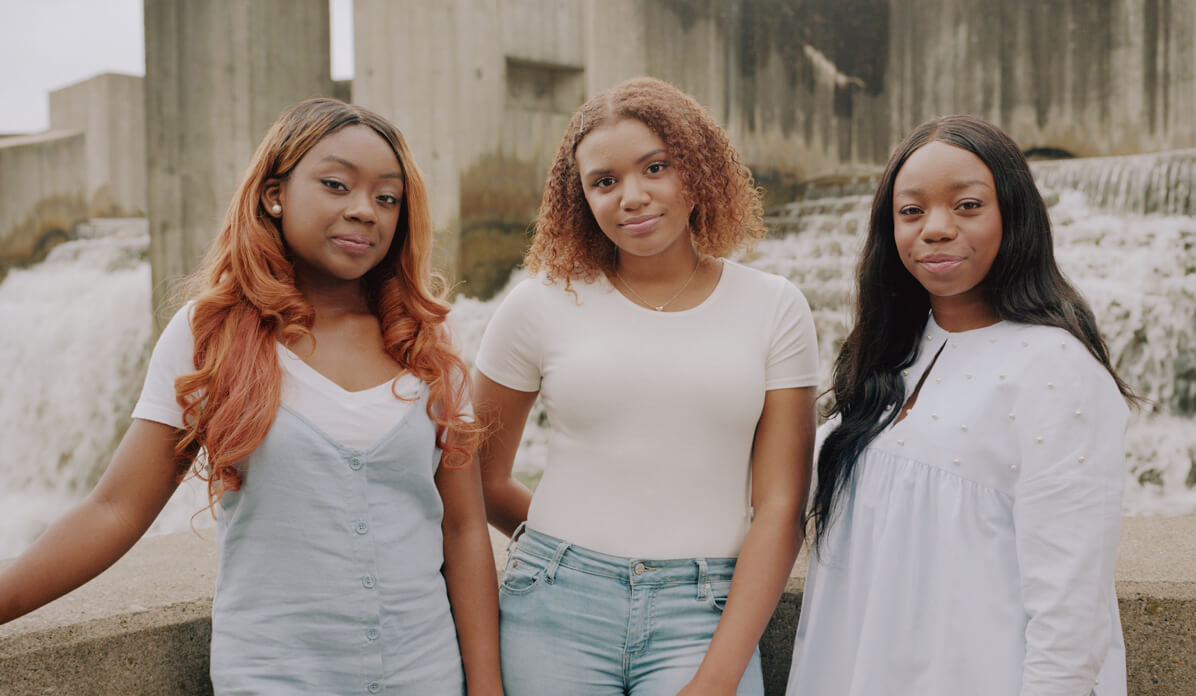In another Google spotlight for Women’s History Month, the company featured three girls from Washington D.C. set to change the world.
Friends Mikayla Sharrieff, India Skinner, and Bria Snell, knew where they’d do their 270 hours of community service to graduate high school: In3, a place for would-be D.C. entrepreneurs to learn code, develop soft skills, and network.
When the girls’ In3 mentor, Marissa Jennings, suggested that they compete in a NASA contest – the Optimus Prime Spinoff Promotion and Research Challenge (OPSPARC) – the girls, now high school seniors, were excited to develop a “spinoff” of an existing NASA technology.
The girls kept coming back to water. Their school’s drinking fountains had recently been covered with plastic garbage bags after construction polluted the school’s water supply. With Flint and nearby Baltimore schools distributing bottled water, the closed fountains seemed part of a larger problem.
Taking NASA’s Apollo program water filtration technology as an inspiration, the girls wondered how astronauts can stay hydrated by drinking recycled urine, but school fountains aren’t free of toxins.

“We know that there are water filters out there, so why do we still have impure water?” India Skinner questioned. “We knew the water in our schools wasn’t good because they had lead testing every year. We knew it was an issue we wanted to combat.”
The girls envisioned a transparent design demonstrating successful filtration. With so much doubt about water quality – 3,000 locations in the United States have higher lead levels in their drinking water than Flint, but testing isn’t widespread – it was important to see the filter work. “Communities deserve to have clean water,” Skinner says. “So what we decided was to create a filter that…you could actually visibly see the water being filtered.”
Their prototype uses a small fan to push toxins through a filter. To demonstrate that the water is clean, pH-testing strips in a clear tube show the balanced pH level.
The S3 Trio, as the girls call themselves, won second place overall and received their award at NASA’s Goddard Space Flight Center, where they met with members of the National Society of Black Engineers to further develop the project. But for the girls, the best outcome might be inspiring others.
People in our community who were interested in STEM, they will see us. We just look like regular high school kids.
Let’s salute these young women for leading their generation and making a difference in their community.
